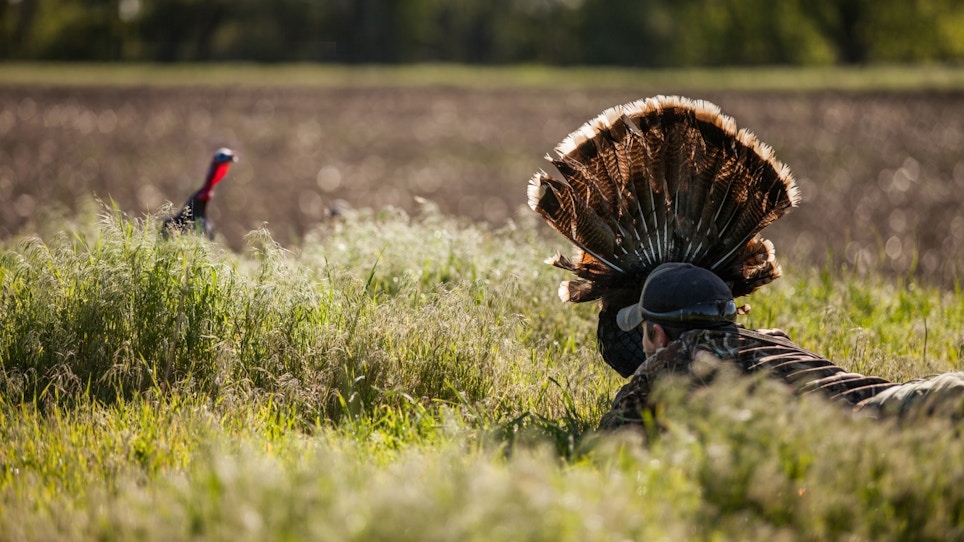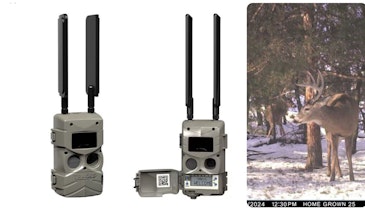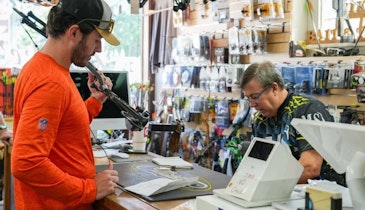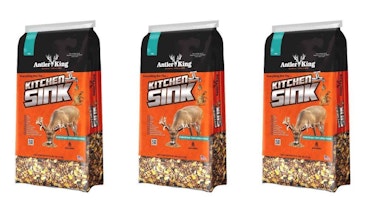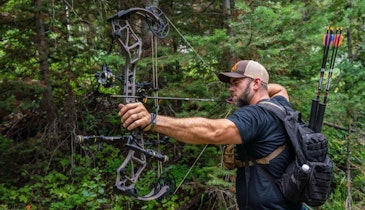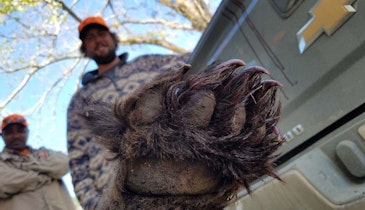The word “authentic” readily comes to mind when you hear the name Knight & Hale. First, there’s the fact that the company’s numerous calls are known for producing incredibly realistic sounds.
But the company itself has a real sense of authenticity. After all, the company was founded by two Kentucky hunters who got their start making calls for their friends. And while it has grown well past its start in the back of Harold Knight’s barber shop, the company hasn’t lost sight of its values, namely, what can it do to make the hunt better for hunters?
Brand Manager John Perry acknowledged that the company’s energy slowed some a few years ago, but that’s changed in a big way in recent years. “There’s a new energy behind the company,” he said. “We’re maintaining our legacy while moving forward as a leader in innovation in the call world.”
We sat down with Perry to talk about the company’s history, its reenergized approach to innovation and how hunters can become better callers.
AB: Can you tell us a little about the history of Knight & Hale?
JP: Harold [Knight] had been a barber and David [Hale] was a farmer. They started turkey hunting at a time when there was no turkey season. They’re from Kentucky, and the Land Between the Lakes opened up a short season. Harold had some calls he’d made, and he was one of the few people to go out and come back with a bird. So they caught each other’s attention through hunting and built a friendship. They made calls by hand from the back of Harold’s barber shop. And they grew the company from that.
They were doing this at a time when no one was mass producing calls. And mass producing calls, for them, was just making them for people around Kentucky as people heard about what they were doing.
It started from turkey calls, but Harold was a big waterfowl hunter – he actually is a world champion goose caller. So the guts you’ll find in a lot of goose calls right now are ones he actually developed way, way back in the day. It’s still the standard that everyone is using.
As they started to grow, they were among the first to realize that one of the best ways to educate consumers on how to use these products and what these products are was to use them on television. They were one of the first groups to really start the TV craze. They were the first hunting celebrities. There are a lot of guys that grew watching Harold and David.
Harold and David really built the company on trying to improve the hunt for hunters. That’s really the foundation of the company. What can we do to make your hunt better? And that’s the way we look at product development. It’s not just about what we can find to sell. It’s about whether this call legitimately has a use, if it solves a problem that hunters are facing right now. We spend a lot of time talking to legitimate hunters to find out what problems they’re facing. We ask them, “If you could solve anything, what would you be looking for?” So focusing on that has been a big part of our success.
AB: When you say that Knight & Hale is reenergized, what do you mean?
JP: There’s a new energy behind the company. We’ve introduced more calls in the last two years than we had in the past decade. We’re introducing new calls and trying to continue to bring innovation to the market.
For example, we have a patent around a quick-release system on a box call. It will actually allow you to change lids so you can change the tones. And this year we added an aluminum side to a box call to give you a two-sided tone. That’s the Razor’s Edge, which is part of the new Bone Collector Series.
We introduced a hands-free friction call. It’s called T-Bone’s Turkey Magnet. It’s got magnets mounted on the side so it actually mounts to your shotgun. You can use it hands free while you’re waiting on a bird. Typically, the only way to go hands free is to use a diaphragm, and a lot of people are not comfortable with diaphragm calls. It takes a lot more practice to get comfortable with those calls. So typically, you have to set your weapon down, use your call and then pick your weapon up. This gives the opportunity for people who want to use a friction call something they can use hands free.
We introduced the Echotech Striker last year. We have a patented system in that. It uses a weighted pendulum at the top, so it speeds up the friction as you’re calling. It makes calling easier, it makes your calls a little bit smoother.
We focus on quality more than gimmicks. Calls have to look nice, but at the same time we focus on function and what we can do to improve the quality.
One of the things we introduced this year was acrylic pot calls. And it’s something that had never been mass produced before because it’s not an inexpensive process. Wood sounds great for pot calls, but it’s a little bit more subject to the elements. If it gets too cold or if it gets really hot, the wood can contract and expand, and that can affect the sound of the call. It’s a little more temperamental if you drop it. The acrylic gives that crafted feel you get from the wood, but it also gives the call more durability. It’s the same reason that waterfowlers went with acrylic.

AB: What other new products did you introduce for 2017?
JP: In the Bone Collector Series, we have the Canyon Cutter, which is one of the two acrylic calls that we introduced this year, as well as the Razor’s Edge and the Turkey Magnet [among other calls]. The Bone Collector team was pretty instrumental in helping us innovate that series. Michael was a competition caller, so he actually worked with Chris Parrish – who built all of our mouth calls and is a multi-world champion caller – and they designed those together. These are the calls that Waddell asked for. These are the cuts he uses.
We also have the Moonshiner, which is another acrylic pot call, and the Legend Series diaphragm calls. These are the calls that Harold designed way back when, and these are the three cuts that, when his buddies needed calls, he made for them. We basically pried them out of his hands to put them on retail. Now everyone has a chance to get the calls that Harold was cutting for his buddies.
The Legend Series call are a little bit easier. As a competition guy, Michael goes for more of the triple reeds. They’re a little harder to blow, they take a little more air. But you can get more out of them. The Legend Series are really more of an everyman’s call – more of the double reeds and two-and-a-half reeds. They’re a little easier to run, a little more forgiving. But you can get a lot of what you need out of them. They’re great calls.
We have some other products as well. We have a blind that works like an umbrella. You can fold it up and throw it in your pack really easily. It pops up and you’ve got a turkey blind right in front of you. And we introduced some snake gaiters.
One thing I think is really cool is a field mat. It rolls up and has a self-containing pouch. When you’re deer hunting, you’re not going to drive out in your camo. Most people change when they get out there and keep all their camo in a sealed bag. That means you’re taking your shoes off. The field mat is something you can roll out so you’re not getting your feet in the grass. When you’re out there, there’s typically dew on the ground, so you get your socks wet or you’re doing that hopping thing where you’re trying to stand on one foot. This is an easy solution to that.

AB: Any tips for people trying to learn to use game calls?
JP: Practice, practice, practice, practice.
Harold and David did a great job of educating consumers on how to use the products. Less people are turning to TV for that now, so, inspired by the way they did it originally, we’re doing that on YouTube and the internet.
We understand that education isn’t just learning a tip like how to purr. It’s starting from the very beginning. We have beginner, intermediate and advanced videos out there. In the beginning, it’s learning something simple. You’d be surprised how many people don’t know how to put the call into their mouth. Which direction do you need it facing? That’s on our packaging, but the videos demonstrate which way the call should be facing and how to add pressure. Then they go through specific topics like how to yelp or how to purr. As you get into the intermediate, it’s more about learning that when the turkeys are on roost, you want to do soft calling this way. If you’re trying to get them to come in a certain way or you’re trying to locate, you would use cuts versus yelps. Just different tips like that. And then you get to advanced, and that’s more about particular calls. Like do you want something that’s more raspy, do you want something that’s a little bit cleaner, are you looking for volume, are you trying to cut better?
We’ve got all those videos that can really take you from the first time you put a call in your hand to hopefully having a couple successful seasons.
But practice is critical. It’s basically a musical instrument. It drives your family crazy – just a warning if you start.
AB: What should retailers know about Knight & Hale?
JP: We’re putting a lot more effort back into our marketing, and we’re trying to reach consumers as broadly as we can. The biggest thing we’ve done is our association with Bone Collector and Michael Waddell. He actually got his start as a competition turkey caller, so while the majority of their shows lean toward whitetail, he’s a turkey hunter at heart. They’ve been heavily involved in product development, which helps us. It gives them ownership, so they’re making pushes through social media, through their shows. They’re hunting over the products. We use them wherever we can. They have an expansive audience. Other than that, we’re doing more videos. We have educational videos and some branded videos, and we’re getting those out to the consumer so they can better understand who we are. We’re using digital advertising and working to get out in front of the consumer.
Also, we’re trying to make things easier for retailers across the board. We’re a one-stop shop and can cover all your needs for calls. We go across all species, so we’ve got turkey, waterfowl, deer, elk, predator. It’s easier to have the support from the team we have here. You can just deal with one person to cover all your needs.

And then with our product base, we try very hard to make it so any consumer can walk in and find the call they need. We have lower price point calls, we have higher price point calls. We have calls that are more for beginners, we have calls that are more advanced. We have box calls, pot calls, tube calls, diaphragm calls. Retailers could literally fill an entire aisle with just what we have. We try to cover the gamut, and we try to make it easy to sell to consumers.
And we have well-educated sales reps that can help our customers make the best selection for what they need. Our sales reps will work with the customer to find out where the gaps in their merchandising are and what we can do to help. It’s an internal group. They’re well-versed on the products and well-versed on what they need to do.
AB: What’s in the future for Knight & Hale?
JP: Anything and everything. We’re always trying to innovate. Trying to make calls more durable, make them more realistic, make them easier. “More calls, less equipment,” is a mantra we have here to make it so people can carry less into the woods and make more sound. Like the aluminum-sided box call. It gives you the ability to make two different calls with one call.
At the same time, we’re looking beyond calls as well. What products are going to make hunting easier? What problems are there with current decoys or vests? What are the issues with the products currently on the market, and how can we make that better? We’re not planning on slowing down on new products any time soon. We’re going to keep pushing to make things better.
Featured image: A man with a decoy sneaks up on turkey in field.
